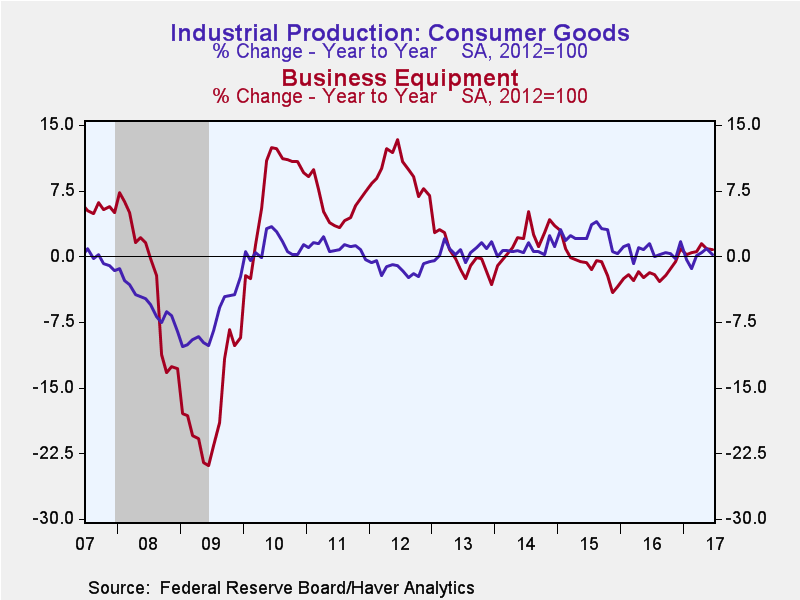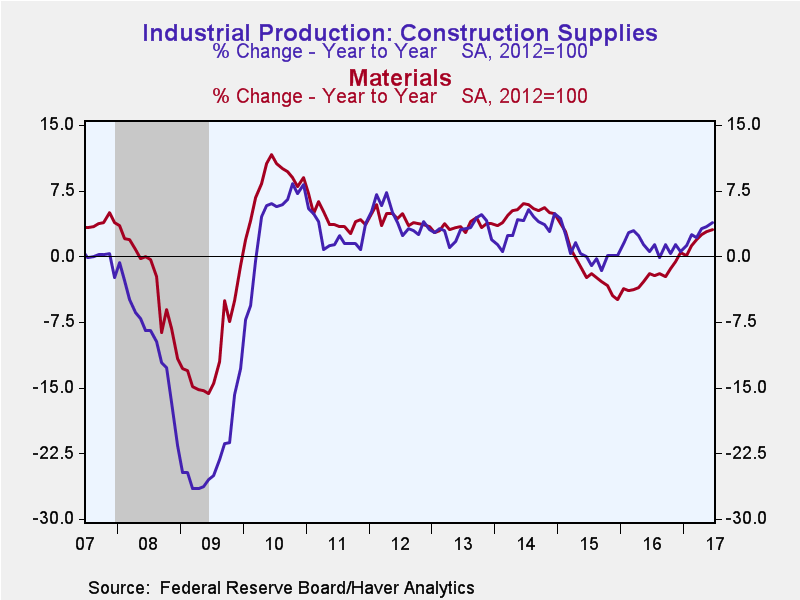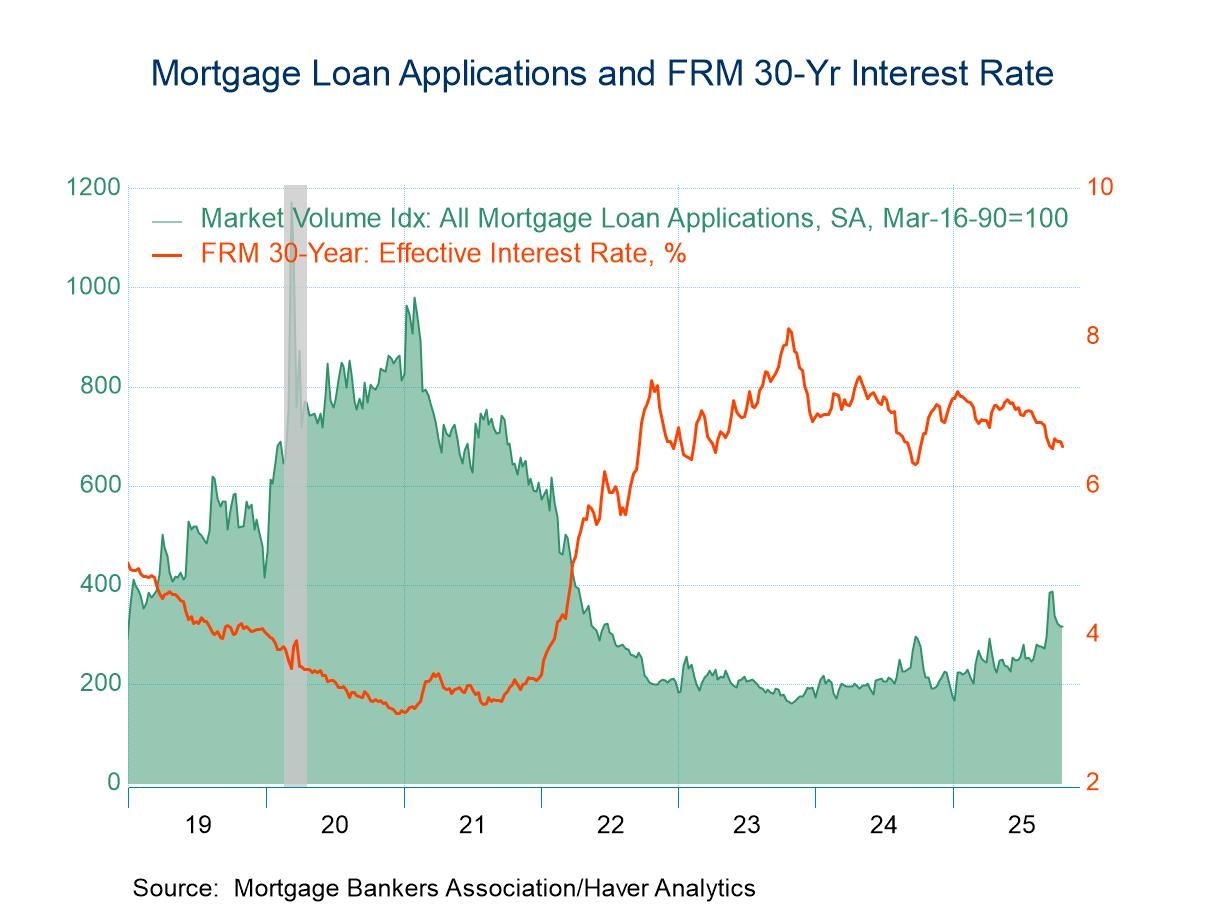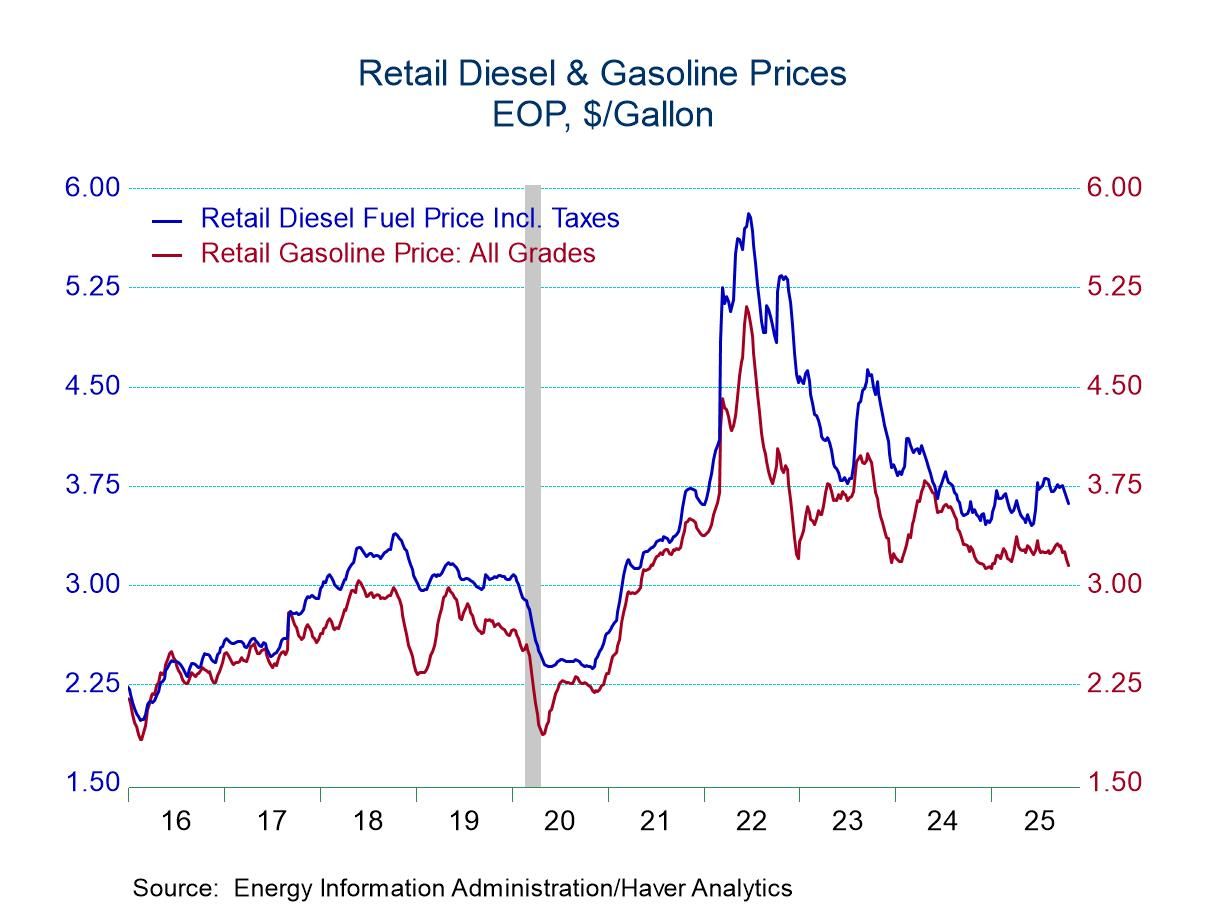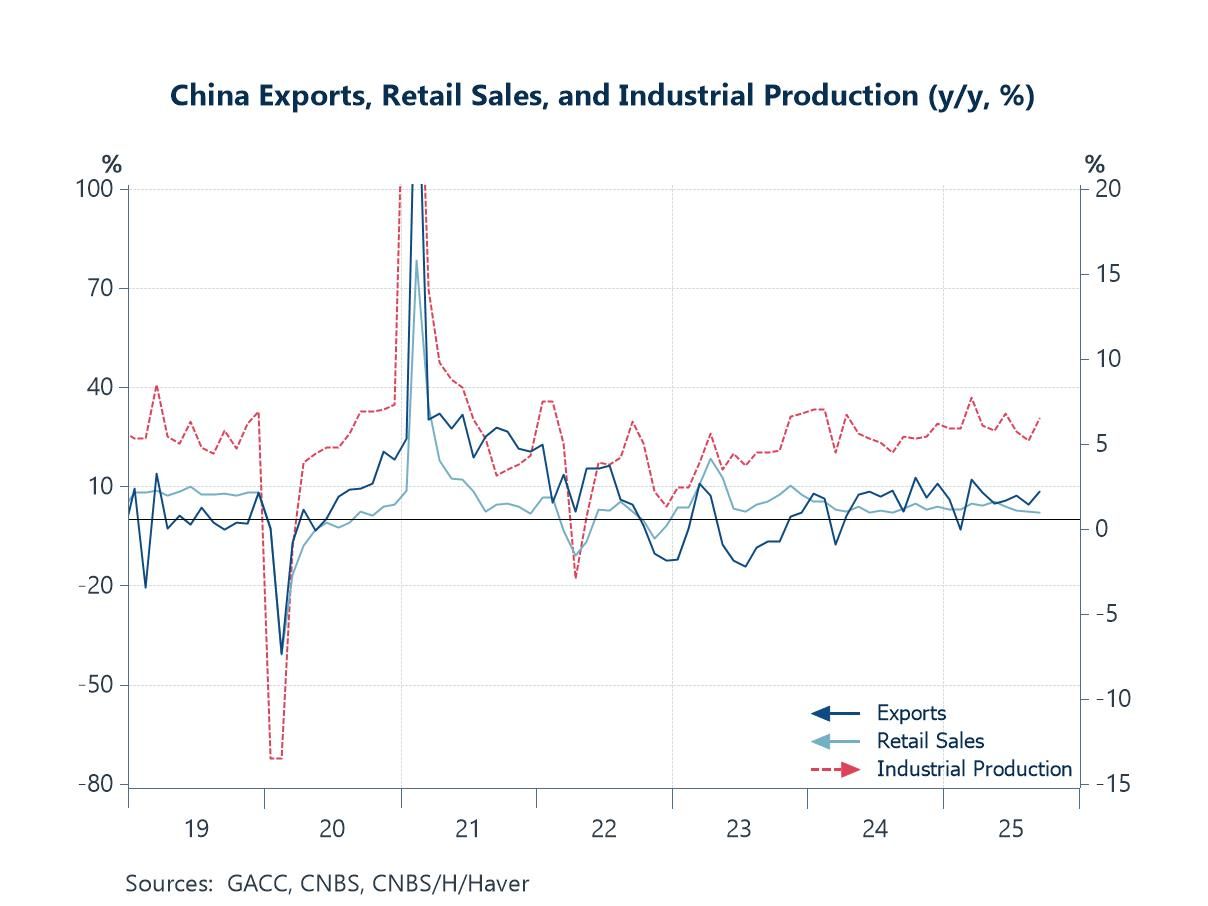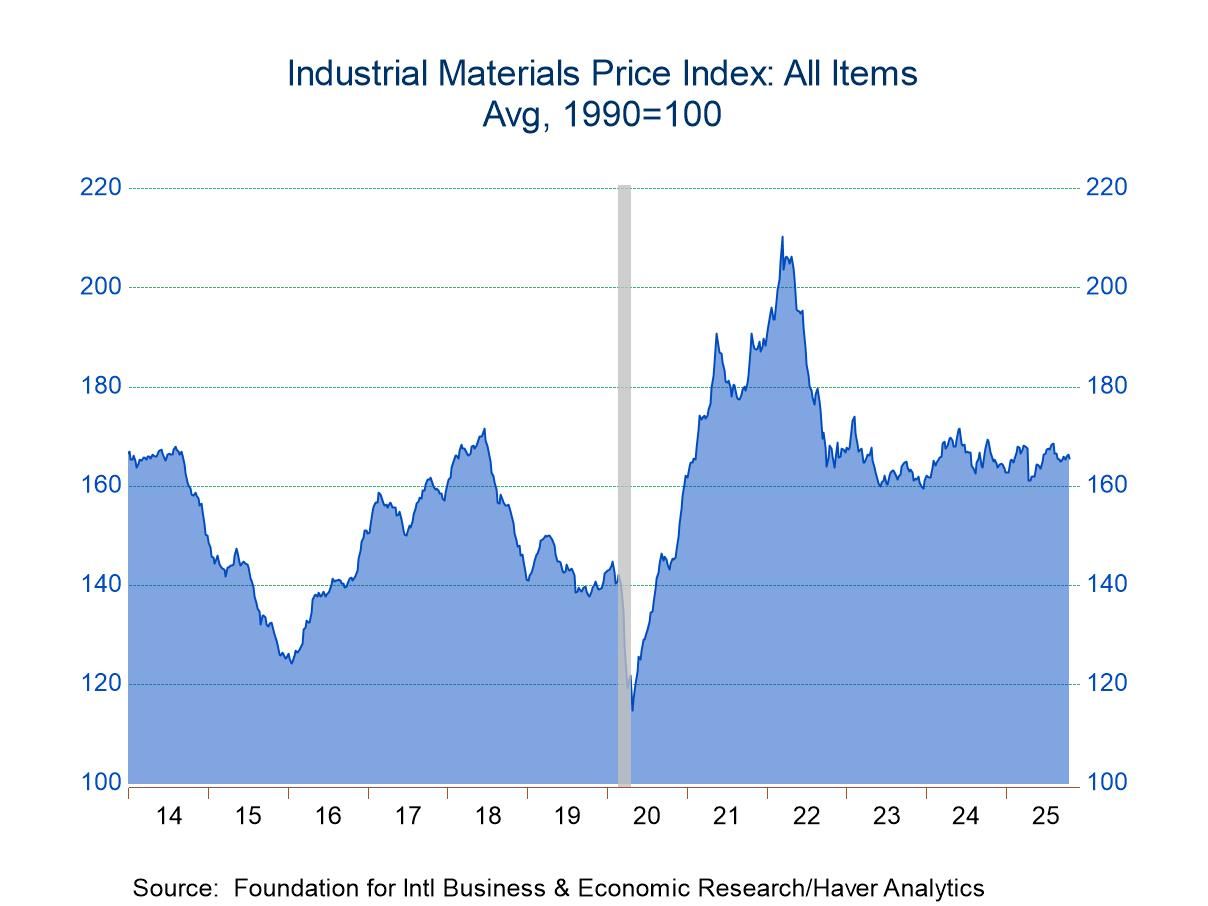 Global| Jul 14 2017
Global| Jul 14 2017U.S. Industrial Production Improves
by:Tom Moeller
|in:Economy in Brief
Summary
Industrial production increased 0.4% during June (2.0% y/y) following a May 0.1% gain, revised from no change. A 0.3% increase had been expected in the Action Economics Forecast Survey. A 1.6% rise (9.9% y/y) in mining output drove [...]
Industrial production increased 0.4% during June (2.0% y/y) following a May 0.1% gain, revised from no change. A 0.3% increase had been expected in the Action Economics Forecast Survey. A 1.6% rise (9.9% y/y) in mining output drove the total higher, strong for the fifth month this year. Utilities output held steady (-2.2% y/y).
Factory sector production gained 0.2% (1.2% y/y) as it followed a 0.4% decline. Consumer products production held steady (0.3% y/y) as nondurable goods output declined 0.3% both m/m and y/y. A 0.3% rise (-0.6% y/y) in chemical products output was offset by a 1.4% decline (-7.4% y/y) in clothing production. Durable consumer goods production improved 1.0% (1.9% y/y) as appliance & furniture production gained 1.9% (1.0% y/y). Motor vehicle & parts production gained 0.7% (0.9% y/y) and computer & video output rose 0.3% (4.5% y/y). Production of business equipment rose 0.2% (0.8% y/y), but information processing & related equipment production fell 0.3% (+4.5% y/y).
Materials production increased 0.7% (3.1% y/y), led by a 1.1% rise (4.9% y/y) in energy materials output.
In the special aggregate groupings, production of computers, communication equipment & semiconductors rose 0.8% (8.0% y/y). Excluding these sectors, as well as autos, factory output rose 0.1% (0.9% y/y).
Capacity utilization held steady at 76.6%, but the factory sector rate inched up to 75.4%.
Industrial production and capacity data are included in Haver's USECON database, with additional detail in the IP database. The expectations figure is in the AS1REPNA database.
| Industrial Production (SA, % Change) | Jun | May | Apr | Jun Y/Y | 2016 | 2015 | 2014 |
|---|---|---|---|---|---|---|---|
| Total Output | 0.4 | 0.1 | 0.8 | 2.0 | -1.2 | -0.7 | 3.1 |
| Manufacturing | 0.2 | -0.4 | 1.0 | 1.2 | -0.0 | 0.1 | 1.2 |
| Consumer Goods | 0.0 | 0.1 | 1.5 | 0.2 | 0.6 | 2.3 | 0.8 |
| Business Equipment | 0.1 | -0.9 | 1.5 | 0.8 | -1.8 | -0.9 | 1.9 |
| Construction Supplies | -0.1 | -0.4 | 1.1 | 3.9 | 1.3 | 0.5 | 3.4 |
| Materials | 0.7 | 0.3 | 0.5 | 3.1 | -2.3 | -1.4 | 5.1 |
| Utilities | 0.0 | 0.8 | 0.1 | -2.2 | -0.3 | -0.7 | 1.4 |
| Mining | 1.6 | 1.9 | 0.7 | 9.9 | -9.1 | -4.3 | 10.7 |
| Capacity Utilization (%) | 76.6 | 76.6 | 76.4 | 75.8 | 75.7 | 76.8 | 78.6 |
| Manufacturing | 75.4 | 75.3 | 75.7 | 75.1 | 75.1 | 75.5 | 75.4 |
Tom Moeller
AuthorMore in Author Profile »Prior to joining Haver Analytics in 2000, Mr. Moeller worked as the Economist at Chancellor Capital Management from 1985 to 1999. There, he developed comprehensive economic forecasts and interpreted economic data for equity and fixed income portfolio managers. Also at Chancellor, Mr. Moeller worked as an equity analyst and was responsible for researching and rating companies in the economically sensitive automobile and housing industries for investment in Chancellor’s equity portfolio. Prior to joining Chancellor, Mr. Moeller was an Economist at Citibank from 1979 to 1984. He also analyzed pricing behavior in the metals industry for the Council on Wage and Price Stability in Washington, D.C. In 1999, Mr. Moeller received the award for most accurate forecast from the Forecasters' Club of New York. From 1990 to 1992 he was President of the New York Association for Business Economists. Mr. Moeller earned an M.B.A. in Finance from Fordham University, where he graduated in 1987. He holds a Bachelor of Arts in Economics from George Washington University.



